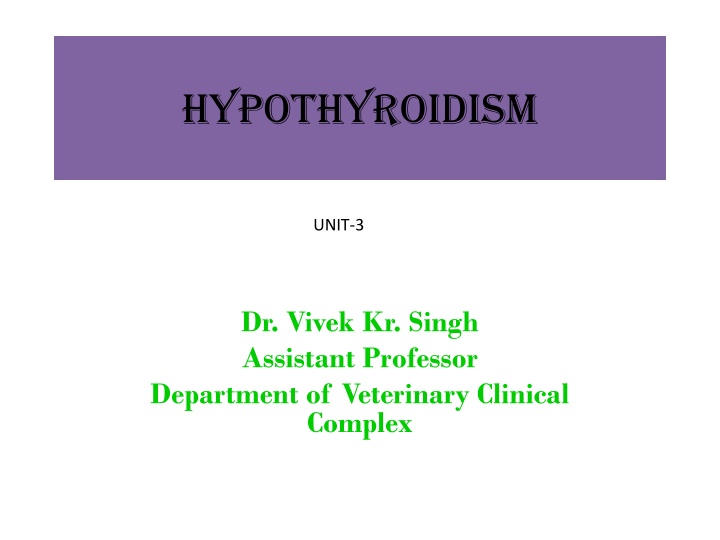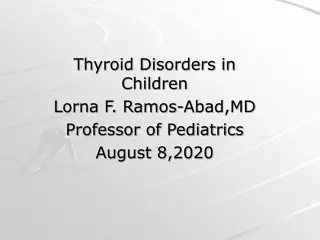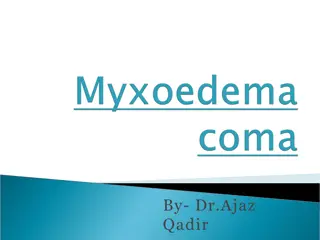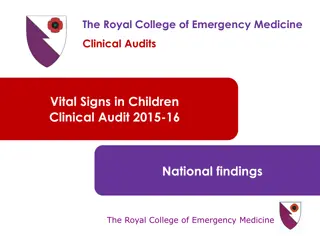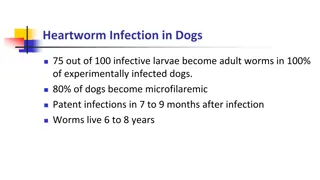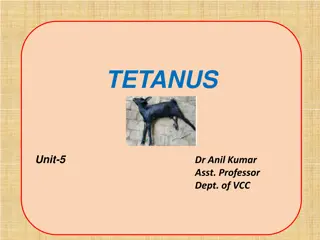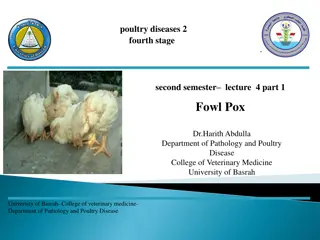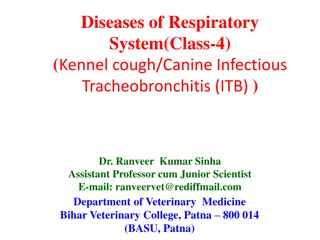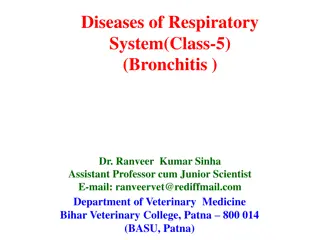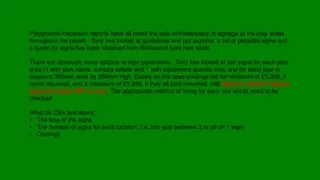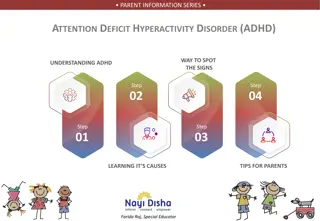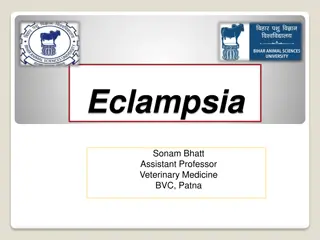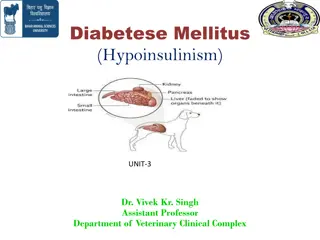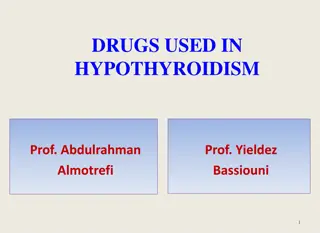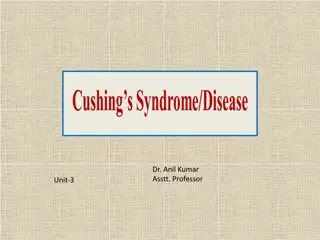Hypothyroidism in Dogs: Causes, Clinical Signs, and Diagnosis
Hypothyroidism in dogs is an endocrine disorder characterized by reduced secretion of thyroid hormones, leading to a range of clinical signs such as lethargy, weight gain, and hair loss. Common in medium to large breeds, this condition can result from primary thyroid dysfunction or pituitary-dependent factors. Diagnosis involves evaluating clinical signs, hematological parameters, and free T4 levels, with treatment typically involving hormone replacement therapy.
Download Presentation

Please find below an Image/Link to download the presentation.
The content on the website is provided AS IS for your information and personal use only. It may not be sold, licensed, or shared on other websites without obtaining consent from the author.If you encounter any issues during the download, it is possible that the publisher has removed the file from their server.
You are allowed to download the files provided on this website for personal or commercial use, subject to the condition that they are used lawfully. All files are the property of their respective owners.
The content on the website is provided AS IS for your information and personal use only. It may not be sold, licensed, or shared on other websites without obtaining consent from the author.
E N D
Presentation Transcript
HYPOTHYROIDISM UNIT-3 Dr. Vivek Kr. Singh Assistant Professor Department of Veterinary Clinical Complex
It is an endocrine disorder due to hypothalmic pituitary-thyroid axis dysfunction resulting in impaired (reduced) secretion of thyriod hormones and related classical cascade of clinical signs
The disorder is most common in dogs and rare in other domestic animals Medium to large sized breeds of 4-10 years of age are most commonly affected Golden Retriver, Doberman, Irish Setter etc.
Etiology More than 95% of clinical cases in dogs are due to Primary dysfunction of the thyroid gland Immune mediated lymphocytic thyroidits Idiopathic atrophy of thyroid gland Rarely congenital hypothyroidism occurs due to dysgenesis of thyroid gland during foetal life (Juvenile onset) Secondary hypothyroidism is pituitary dependent hypothyroidism
Clinical findings The deficiency of thyroid hormone affects functions of all organs and systems, therefore results in variable clinical signs Dullness Lethargy Exercise intolerance Weight gain (without a corresponding increase in diet)
Cont Hypothermic (Seek warm places) Dry skin Puffiness of upper eye lid Excessive shedding of hair Non- pruritic bilaterally symmetrical alopecia Alopecia involves ventral/ lateral trunk, thighs and dorsum of the tail Rat tail appearance is common
Thickened skin folds above eyes Reproductive disturbances Infertility Abortion Poor litter survival Lack of libido Testicular atrophy
Rat Tail appearance Dullness/ sitting in warm places Alopecia Puffy upper eyelids
Diagnosis Clinical signs Hematology normochromic non-regenerative anaemia High cholesterol level Determination of free T4most accurate laboratory diagnostic method Biopsy of thyroid to differentiate primary and secondary hypothyroidism reveals normocytic
Treatment Thyroid hormone replacement therapy is necessary for the rest of the dog s life Thyroxin (T4) is the compound of choice in dogs Administered @ 0.02-0.04 mg/ kg bwt orally once or in divide doses Serum thyroid hormone should be monitored frequently to avoid thyrotoxicosis
